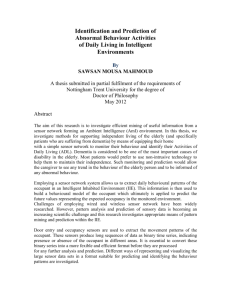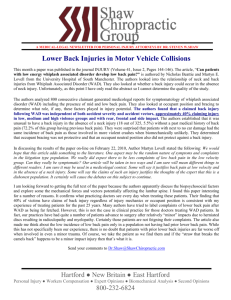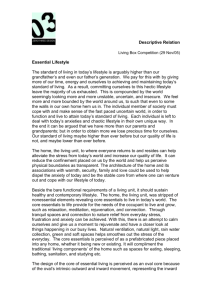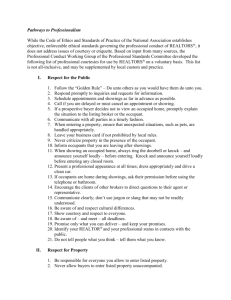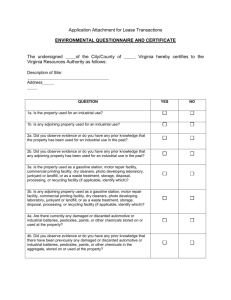Occupant Load Calculation
advertisement
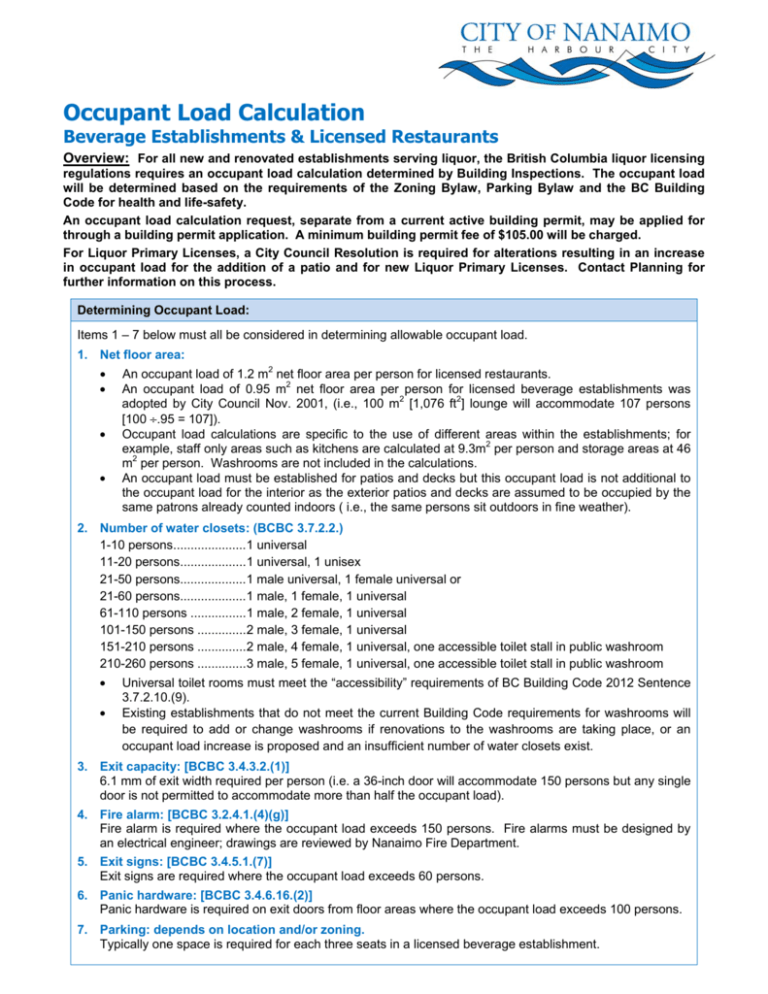
Occupant Load Calculation Beverage Establishments & Licensed Restaurants Overview: For all new and renovated establishments serving liquor, the British Columbia liquor licensing regulations requires an occupant load calculation determined by Building Inspections. The occupant load will be determined based on the requirements of the Zoning Bylaw, Parking Bylaw and the BC Building Code for health and life-safety. An occupant load calculation request, separate from a current active building permit, may be applied for through a building permit application. A minimum building permit fee of $105.00 will be charged. For Liquor Primary Licenses, a City Council Resolution is required for alterations resulting in an increase in occupant load for the addition of a patio and for new Liquor Primary Licenses. Contact Planning for further information on this process. Determining Occupant Load: Items 1 – 7 below must all be considered in determining allowable occupant load. 1. Net floor area: • • • • An occupant load of 1.2 m2 net floor area per person for licensed restaurants. An occupant load of 0.95 m2 net floor area per person for licensed beverage establishments was adopted by City Council Nov. 2001, (i.e., 100 m2 [1,076 ft2] lounge will accommodate 107 persons [100 ÷.95 = 107]). Occupant load calculations are specific to the use of different areas within the establishments; for example, staff only areas such as kitchens are calculated at 9.3m2 per person and storage areas at 46 m2 per person. Washrooms are not included in the calculations. An occupant load must be established for patios and decks but this occupant load is not additional to the occupant load for the interior as the exterior patios and decks are assumed to be occupied by the same patrons already counted indoors ( i.e., the same persons sit outdoors in fine weather). 2. Number of water closets: (BCBC 3.7.2.2.) 1-10 persons..................... 1 universal 11-20 persons................... 1 universal, 1 unisex 21-50 persons................... 1 male universal, 1 female universal or 21-60 persons................... 1 male, 1 female, 1 universal 61-110 persons ................ 1 male, 2 female, 1 universal 101-150 persons .............. 2 male, 3 female, 1 universal 151-210 persons .............. 2 male, 4 female, 1 universal, one accessible toilet stall in public washroom 210-260 persons .............. 3 male, 5 female, 1 universal, one accessible toilet stall in public washroom • • Universal toilet rooms must meet the “accessibility” requirements of BC Building Code 2012 Sentence 3.7.2.10.(9). Existing establishments that do not meet the current Building Code requirements for washrooms will be required to add or change washrooms if renovations to the washrooms are taking place, or an occupant load increase is proposed and an insufficient number of water closets exist. 3. Exit capacity: [BCBC 3.4.3.2.(1)] 6.1 mm of exit width required per person (i.e. a 36-inch door will accommodate 150 persons but any single door is not permitted to accommodate more than half the occupant load). 4. Fire alarm: [BCBC 3.2.4.1.(4)(g)] Fire alarm is required where the occupant load exceeds 150 persons. Fire alarms must be designed by an electrical engineer; drawings are reviewed by Nanaimo Fire Department. 5. Exit signs: [BCBC 3.4.5.1.(7)] Exit signs are required where the occupant load exceeds 60 persons. 6. Panic hardware: [BCBC 3.4.6.16.(2)] Panic hardware is required on exit doors from floor areas where the occupant load exceeds 100 persons. 7. Parking: depends on location and/or zoning. Typically one space is required for each three seats in a licensed beverage establishment. Occupant Load Calculation Building Code Review: A. Provide a floor plan of the premises showing the following: • Layout of rooms with uses noted • Table and seating plan • Permanent fixtures, (ie. bars, bar, partitions, stage, pool table, etc • Washrooms and toilets/urinals including staff washrooms • Exits, door dimensions, direction of swing and panic hardware • Dimensions and floor areas of public, staff-only areas, decks and patios • Plan showing on-site parking B. Using Items 1-7 of this document as a checklist, calculate the occupant load, number of washrooms required, and exit capacity. Existing licensed capacity # of persons Occupant load based on floor area (see item 1) M2 M2 M2 # male mm Water closets Exit capacity Occupant Load Calculations # female # universal C. Building Inspections staff will review your drawing and calculations. Buildings that are deficient in any of the items (1-7) may require upgrading to the BC Building Code minimum before an increase in occupant load will be considered. D. A building permit is required if the building must be altered to accommodate a new occupant load. • Permit fee is based on value of alterations. • The BC Fire Code requires that an occupant load sign be posted wherever the occupant load exceeds 60 people. BC Building Code requires that an occupant load sign be posted when an assembly occupancy with an occupant load of 30 or less has been classified as Group D occupancy under Article 3.1.2.6.. Signage will be posted by the Fire Safety Branch of the Fire Department. Building Inspections staff will visit the premises to ensure the sign is posted, and then complete the file. • The new occupant load will be forwarded to the Nanaimo Fire Department for their inspection records. Additional guidelines and forms are available on the City of Nanaimo web site www.nanaimo.ca under Department, Building Inspection, Publications and Forms or at our office, 411 Dunsmuir Street. If you have any questions or require clarification, please contact a commercial building official at our office at 250-755-4429. This guideline should not be used as a substitute for existing building codes and other regulations. The building owner is responsible for compliance with all codes, bylaws, and other regulations whether or not described in this guideline. Revised: 2013-FEB-28 G:\DSDSystem\Handouts\Building\Commercial\OccupantLoadCalculation.docx Building Inspections Forms and Handouts Page 2 of 2

